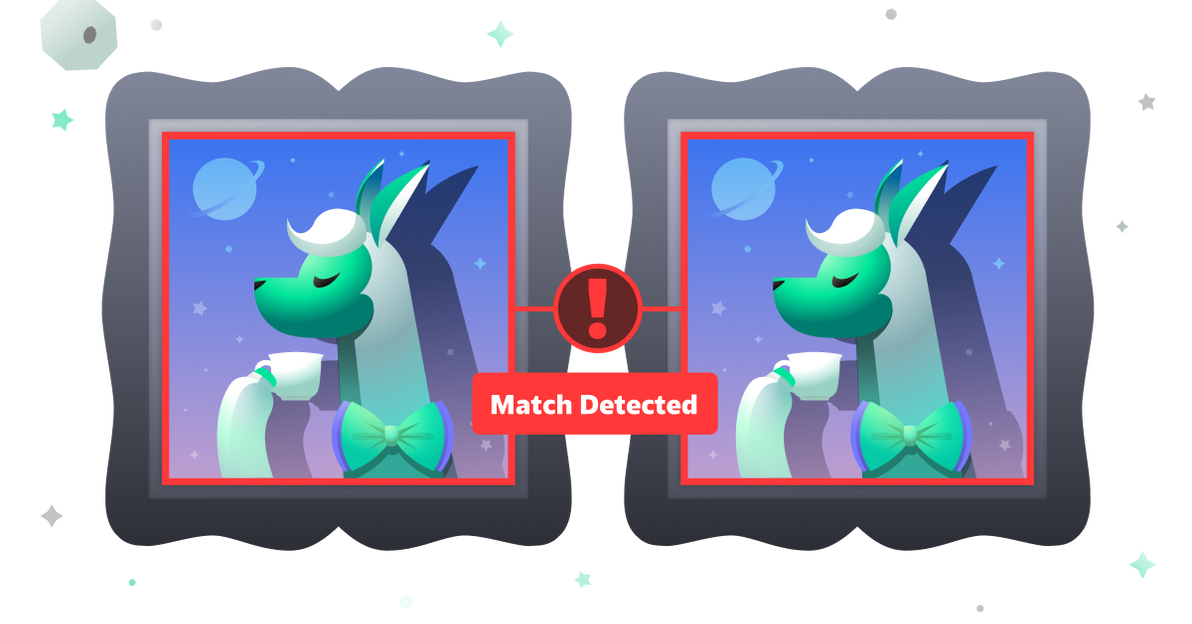We use cookies and other tracking technologies to improve your browsing experience on our site, show personalized content and targeted ads, analyze site traffic, and understand where our audiences come from. To learn more or opt-out, read our Cookie Policy. Please also read our Privacy Notice and Terms of Use, which became effective December 20, 2019.
By choosing I Accept, you consent to our use of cookies and other tracking technologies.
Filed under:
It’s offering access to non-DeviantArt artists
DeviantArt is expanding its tool for detecting ripped-off crypto art, offering it to artists outside the platform. DeviantArt Protect, which launched last year for art posted on the site, will now be available for work that isn’t hosted there as well. Users can upload copies of art to Protect and have it matched against non-fungible token (or NFT) images minted to one of several public blockchains. If an identical or near-identical match is detected, they’ll receive an alert and can send takedown requests to major NFT markets like OpenSea.
The new version of Protect will let anyone upload 10 images (totaling up to 2GB) and have them monitored for free, or users can sign up for DeviantArt’s $9.95 monthly “Core Pro” service and monitor up to 1,000 images totaling 50GB. Protect scans images minted to the Ethereum, Klaytn, Polygon, Arbitrum, Optimism, Palm, Tezos, and Flow blockchains, and if a match is detected, artists can choose to send a pre-filled Digital Millennium Copyright Act (DMCA) request asking markets to remove the offending NFT.
Unfortunately for artists, there’s no simple way to have an image taken off a blockchain, whether the picture is encoded directly into the chain or added as a link that’s hosted somewhere else. “Once something has been minted to the blockchain, even if after that it’s acknowledged as an infringement, actually having it removed from the blockchain is quite unlikely,” says DeviantArt CMO Liat Gurwicz. The copyright status of NFTs is complicated and largely unsettled in court, and associating a crypto token with a piece of art isn’t traditional copyright infringement.
NFT marketplaces typically display an image of the art in question, however, giving the rightsholder room to demand a takedown. And the vast majority of NFT sales flow through OpenSea and a handful of other markets, creating a major bottleneck in the supposedly decentralized system. “[If] it is not reflected in any of the marketplaces, it is highly unlikely that anyone will ever see or attempt to purchase that NFT,” says Gurwicz.
Marketplaces have taken an increased interest in stolen or “copyminted” NFTs, a widely acknowledged problem in the space. OpenSea recently introduced its own system for detecting copycats, scanning for duplicates of existing NFTs on the platform. But many artists object to having their work added to a blockchain for a variety of reasons, including the environmental impact of the popular Ethereum blockchain.
DeviantArt introduced Protect last September for users of the platform. All images on DeviantArt are automatically monitored for three months, and Core subscribers have their work monitored by the system indefinitely. (Anyone who subscribes to Core for the off-platform Protect tool will also have access to other DeviantArt Core features as well.) So far, DeviantArt says it’s indexed 345 million NFTs from eight blockchains and sent 245,000 alerts about potentially stolen art; it did not reveal how many of those led to a takedown request against a marketplace.
Many web platforms are experimenting with features that promote blockchain-based “Web3” tech. Instagram and Twitter both have special NFT image display options, and Spotify is testing a way to let artists promote their digital collectibles. Gurwicz says DeviantArt is theoretically open to the prospect, but right now, there’s apparently little demand for it. “I think over the past year and a half, we have understood the biggest need coming from our community to be the protection around their art,” she says. “So that’s where we’re focused at the moment.” Gurwicz says DeviantArt has received requests to add support for audio and video content, and it’s considering options for scanning those files as well.
“I think that Web3 holds a lot of promise and opportunity for creators,” says Gurwicz, citing the possibility of artists finding new ways to sell access to their work without relying on a handful of centralized web platforms. “But right now, unfortunately, Web3 is just not delivering on that promise. And instead of creators being able to enjoy opportunity, they’re currently suffering from a lot of fraud and abuse and infringement of their work.”
Things like Ethereum’s high “gas fees” for processing transactions can also add dozens or even hundreds of dollars to the cost of purchasing NFTs — making the system unfeasible for people who want to sell their work at lower prices. “When the gas fees that your consumer or customer would have to pay are higher than the cost of the item itself that you want to sell, that also doesn’t make a whole lot of sense in terms of access or adoption,” Gurwicz says. And while a huge amount of money flows through the crypto space, the actual number of NFT buyers remains fairly low, with interest potentially tapering off in recent months.
“A lot of creators are looking at the space at the moment and they’re saying, you know, the way that it’s actually being delivered on is not doing any of these things that it promised to do,” says Gurwicz. “For a creator who dedicates their whole career to making art, I can understand why that feels very off-putting.”
Correction: The 1,000-image subscription option is available through the $9.95 DeviantArt Pro package, not the $3.95 non-professional Core subscription. We regret the error.
Subscribe to get the best Verge-approved tech deals of the week.
Please confirm your subscription to Verge Deals via the verification email we just sent you.

